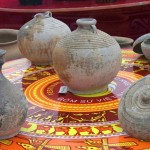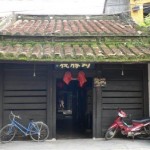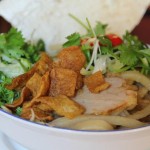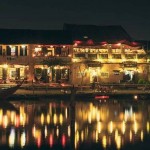The museum supplies plenty of information on the ancient people of Sa Huynh civilization, who were the first owners of the Hoi An trading port, having trading relationships with the people of China, India, and South East Asia.
The Sa Huynh Culture Museum in Hoi An is a bearer of a legacy that is both rich and rare. It is one of the most important museums in Hoi An. Located in the Tran Phu Street of the Hoi An heritage center, the museum house is a crucial relic of the Sa Huynh culture. The Sa Huynh culture is a pre historic Bronze Age civilization that occurred in Vietnam, particularly in the central region of the country, near the coast. The Sa Huynh culture specialized in metal wares ? especially bronze and iron ? and ceramics. The majority of the displays in the museum comprises of articles such as jewelry, weapons and useful implements such as axes. All recovered evidence of these facts is preserved and displayed in the Sa Huynh Culture Museum in Hoi An. There is another feature that the Sa Huynh had perfected to the level of art – the funerary rituals and rites. Discovery of over 200 jar burials from 50 or more different sites is recorded in the Sa Huynh Culture Museum. Most of the articles on display in the Sa Huynh Culture Museum date back to the 1st Millennium BC, the Iron Age.
There are a total of 216 exhibits in the museum. They were all acquired from the Hau Xa, Thanh Chiem, An Bang and Xuan Lam villages. The artifacts at the museum are considered the most unique collection of the Sa Huynh civilization in Viet Nam.
Cemetery and Habitation Site at Hau Xa 1
Hau Xa I is the Eastern end of a large sand dune spreading from Dien Ban to Hoi An. This sand dune is about 5km long, running along the Northern bank of an ancient stream which is completely sited up and called Roc Gom (Ceramic Stream) by the local people.
The cemetery and habitation sites at Hau Xa I were discovered on July 1989, and were continuously tested, excavated on February 1993; August 1993; and January 1994
The cemetery site: The total area of the 4 trenches was 42.5 m2. There were 30 Burial Jars, most of them were nixed up or damaged due to different reasons. The finds were mainly ceramic artifacts. They were family tools which were so plentiful people. Ceramic covers were the pencil color and earth-yellow. There were also many precious stone, glass or agate. Lots of iron tools were mainly used for production, weapons.
The habitation site: The local area of the two times of survey and excavation was 48 m2. In this site, the cultural layer was rather thick (1m-1.5m) and the process was stable: the upper layer (the years from the centuries III-IV to the centuries X-XI) had many Cham Pa ceramics, Luc Trieu, Duong porcelains … the under layer( from the first century to the fourth century) has many coarse pieces of ceramic of Sa Huynh and ancient Cham Pa, mould fray ceramics, rough ceramics with Han square- compressed designs or Han style. There were also many strings of stone and glass beads and a bronze thing with the design of the leaf of Buddha tree
The cemetery and inhabitation sites at Hau Xa I have supplied many valuable information of Burial custom of Sa Huynh inhabitants, the cultural development and exchange of Sa Huynh – Cham Pa- Han.
Source: hoian-tourism.com
Post Views:
2,078








